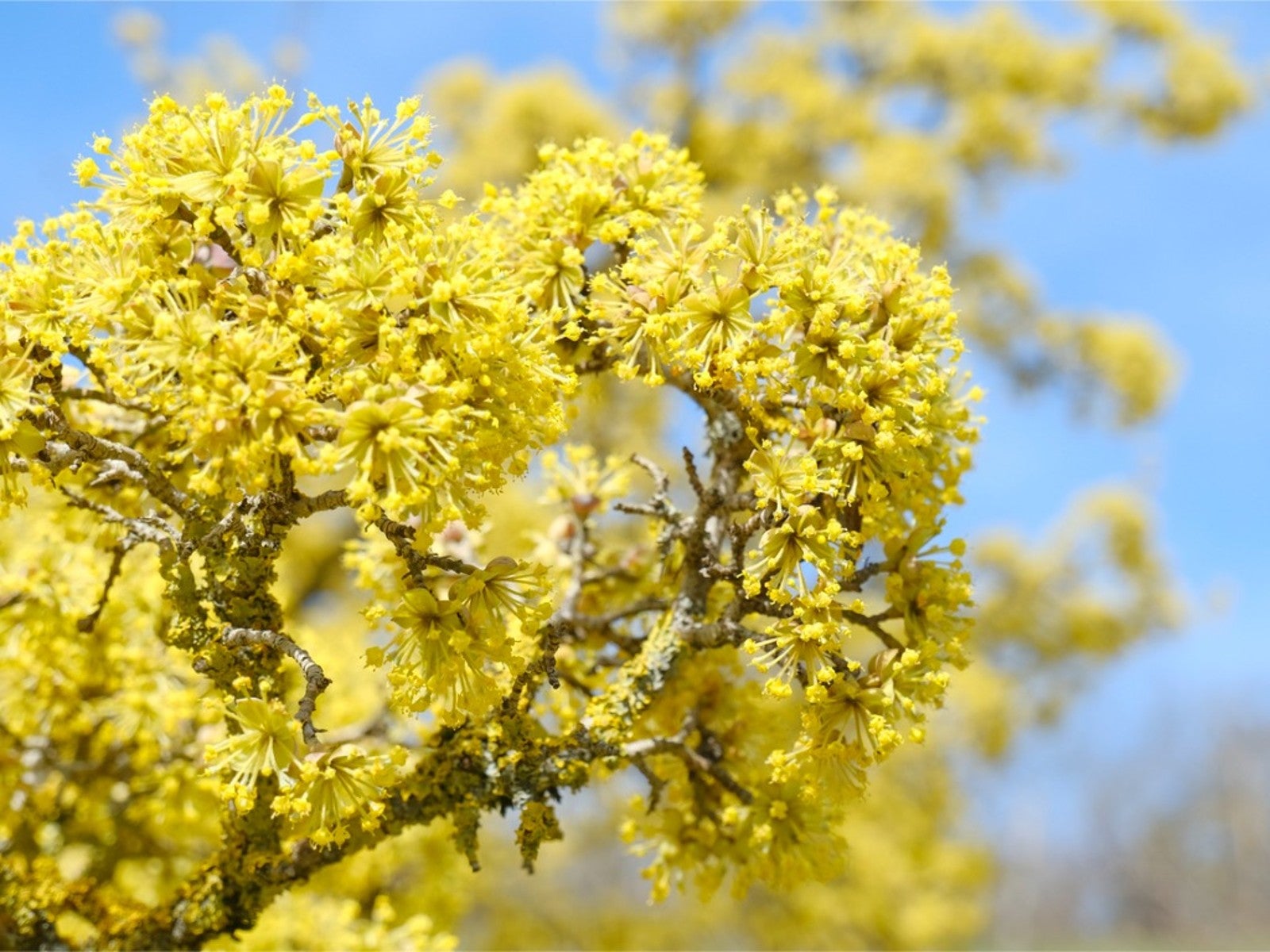5 Drought Resistant Flowering Trees For Water Wise Landscapes


While flowering trees are what you want, drought tolerant trees are what you need. Fortunately, there are a number of drought resistant flowering trees that will adorn your garden while requiring minimal water. These types of plants can form the bones of a water wise landscape.
Remember that the fact that a tree is easy on water doesn’t necessarily mean it will thrive in your yard. Growing flowering trees successfully requires that you select appropriate trees for your site, trees that thrive in the growing conditions you offer and won’t exceed the size of the site.
Ready to select your flowering drought tolerant trees? Here’s a short list of our favorites.
Best Drought Tolerant Flowering Trees
1. Texas redbud (Cercis canadensis var. texensis)
This little deciduous tree is among the earliest to bloom in the springtime, lighting up the bare branches with showy magenta flowers. The impressive display happens every year during March and April. But the show isn’t over once the flowers fade. This redbud also offers dark green summer foliage that blazes gold in autumn. As winter rolls in, the tree still has interest with its purple seed pods. It is the most drought tolerant of the redbuds.
2. Japanese crepe myrtle (Lagerstroemia fauriei)
This broadleaf evergreen, native to Japan, offers joy in every season. It grows to 30 feet (9 m) tall with arching branches, extremely showy flowers in late summer, and lovely red-brown peeling bark in winter. Then there are the fruits, green when young, then maturing to a dark brown. Hardy to USDA zone 6, this crepe myrtle only offers white flowers, but it is a low-maintence tree that needs minimal water once the root system is developed.
3. Cornelian cherry (Cornus mas)
This small tree is valued for its early spring blooms, a cloud of bright yellow flowers that appear before the leaves arrive. Cornelian cherry usually doesn’t grow past 25 feet (7.5 m) tall, with a slightly smaller spread. When the tree is mature, the exfoliating bark is another ornamental feature. After that, the leaves emerge in dense, showy, rounded clusters, each surrounded at the base by small, yellowish, petaloid bracts. Note that these are not as showy as other dogwood species. The fruits, fleshy, one-seeded berries mature to cherry red in mid-summer.
4. Green hawthorn (Crataegus viridis)
Native to the US, green hawthorns are beautiful drought resistant flowering trees that grow to 35 feet (10.5 m) tall. Unlike some hawthorns, these are generally thornless and thrive in USDA zone 4-8. The flowers appear in clusters in May and have a strong fragrance that not everyone appreciates. These are followed by small red berry-like fruits that ripen in September. You can use them to make jams, and the birds enjoy them all winter long. The tree is extremely drought resistant and requires little water.
Sign up for the Gardening Know How newsletter today and receive a free copy of our e-book "How to Grow Delicious Tomatoes".
5. Japanese pagoda tree (Styphnolobium japonicum)
This handsome shade tree brings summer magic as its branches fill with creamy white flowers. It’s a big tree, to 75 feet (23 m) tall, with tremendous ornamental value, and it thrives in USDA zones 4 through 8. Although newly planted pagoda trees require irrigation, no supplemental water is needed after the first year, so go ahead and practice water-wise gardening while enjoying your drought resistant, flowering trees.

Teo Spengler is a master gardener and a docent at the San Francisco Botanical Garden, where she hosts public tours. She has studied horticulture and written about nature, trees, plants, and gardening for more than two decades, following a career as an attorney and legal writer. Her extended family includes some 30 houseplants and hundreds of outdoor plants, including 250 trees, which are her main passion. Spengler currently splits her life between San Francisco and the French Basque Country, though she was raised in Alaska, giving her experience of gardening in a range of climates.